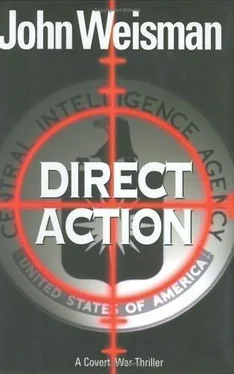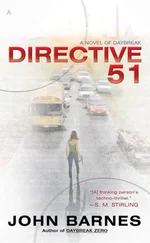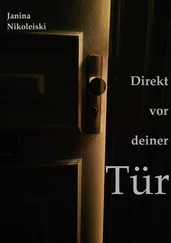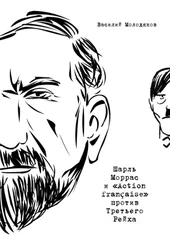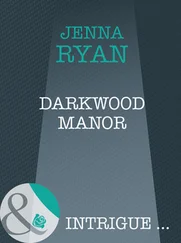“Hmm.” Tony Wyman pushed back, tilted the big chair, rested his Ballys on the desk mat, and closed his eyes.
After half a minute, Tom grew itchy. “What?”
“But Shahram never denied he went to the embassy.”
Tom thought hard about Wyman’s query before he answered. “No. In fact, he went evasive when I pressed him.”
Wyman put his arms behind his head and interlocked his fingers. “There’s something funny going on here.” He looked at Tom. “Somebody’s trying to run a game on us.”
“Who?”
“Maybe the seventh floor. Maybe your friend Shahram. Didn’t you say he was down on his luck? Could be he was hoping to score a quick half mil and disappear.”
“Isn’t Langley smarter than that?”
“Langley,” Wyman scoffed, “once paid a Lebanese fifty thousand cash for a map of the Beirut sewer system. The Agency was going to infiltrate a Delta team through the sewers and have them come up next to the house in south Beirut where two Americans were being held hostage.”
“So?”
“There are no sewers in Beirut, Tom-except the open sewers in the old Palestinian camps.” He paused. “Look-Shahram was smart. He knew Langley’s vulnerabilities as well as anyone. And he had a score to settle. He’d been labeled an untouchable. He was out in the cold.” Wyman looked at Tom. “Possible?”
“Possible, Tony.” Tom sighed. “But I don’t think Shahram would run a game on me. He gave me the photographs-never mentioned money.”
“Okay-here’s another scenario. It’s the seventh floor. You know how that crowd loves head games. Maybe they’re trying to manipulate us to do their work for them but they get away without paying. Hell, for all I know, this Adam Margolis is marking the deck so he gets a promotion and a big performance bonus. Who’s doing what here, Tom? Not sure. But some-one’s trying sleight of hand-and we’d better find out who damn fast, or we’re gonna end up holding the short end of the stick.”
Wyman’s monologue had set Tom’s head spinning. Had Shahram played him? Not according to the photographic evidence. Not according to MJ’s results on her photo analysis software-and Langley’s negative reaction to it. Tom leaned forward and drummed his fingers on the edge of the desk. “I should talk to this Margolis. Maybe I can shake something loose.”
Wyman lifted his monocle and examined it, exhaled on the lens, used his silk pocket square as a polishing cloth, then let the instrument fall back onto his lapelled vest. “I agree, Tom. Perhaps you should.”
6 NOVEMBER 2003
2:48 P . M .
RUE DU FAUBOURG ST. HONORÉ
SCARF FLAPPING IN THE BREEZE,the collar of his sport coat turned up against the chill in the air, Tom slalomed his way past Place Beauvau, where submachine-gun-toting guards in crisp blue-and-white uniforms manned the ceremonial gates of the Ministry of the Interior. He stopped long enough to admire a pair of old Roman amphorae in the window of a posh antiques store, sprinted across the rue des Saussaies against the light, then pushed through the meandering knots of afternoon window-shoppers crowding the Faubourg’s sidewalk.
The day was bracingly cold; the cloudless sky the distinctive shade of azure cum cerulean that makes Paris skies in the fall, well, Paris skies in the fall. The Christmas decorations were already up in the windows of the dozens of haute couture shops crowded côte-à-côte on the Faubourg, and the intense woodsy perfume of chestnuts roasting on a charcoal brazier swept suddenly and mercilessly over him as he strode past the rue d’Aguessau, causing his mouth to water involuntarily.
Tom hadn’t been to the embassy in months. Indeed, he seldom came to this part of town unless it was to share a bottle of young Bourgueil with his old friend Robert Savoye, who ran Le Griffonnier, a cozy wine bar sandwiched between a pair of shoe-box office buildings on rue des Saussaies opposite the Ministry of the Interior. So he was, if not amazed, then certainly taken aback at the overwhelming amount of security personnel present in this most upscale of Parisian neighborhoods.
Portable barricades lined the south side of the Faubourg, cordoning off both the Palais de l’Élysée and the entrance to the British embassy. The smartly dressed gendarmes in their spiffy caps, red-trimmed tunics, white dress gloves, holstered revolvers, and mirror-polished shoes who normally guarded the French president and the Brit diplomats’ front doors had been augmented by dozens of tactical officers in midnight-blue fatigues tucked into jump boots and body armor. The cops had their war faces on. They carried compact FN submachine guns and long rubber truncheons and wore black leather gloves whose knuckles were filled with lead shot. Packets of flexi-cuffs hung from their duty belts. On the side streets, black vans and minibuses held SWAT teams. At the north end of rue d’Aguessau where it dead-ended at the rue de Surène, a huge windowless bus turned into a mobile command center bristling with VHF antennas, a GPS receiver, and a pair of satellite dishes that straddled the narrow street.
He continued past the Versace boutique, crossed the Faubourg, and walked past a cordon of cops who directed him toward a steel barrier funnel that blocked off the entrance to rue Boissy-d’Anglas. A pair of tactical officers stared at him as he approached the barrier.
Tom nodded at them. “Morning.”
They nodded back but said nothing.
He continued down the street. On the left stood the service entrance to the grand Hotel Crillon, built as a palace for Louis XV. Marie Antoinette had taken singing lessons there. The hotel entrance stood facing the Place de la Concorde, where she’d been guillotined. On the right was the old Pullman Hotel, which had been rechristened in the 1990s as the Sofitel Faubourg St. Honoré. The Sofitel was where the embassy lodged mid- and upper-grade diplomat visitors and TDYs. (Supergrades-minister-counselors and career ambassadors-were customarily put up at the Bristol or the Meurice, because as grand exalted pooh-bahs, they rated cars and drivers.)
The bar on the Sofitel’s ground floor was exactly 158 paces from the embassy gate. At least that’s how many steps it had been when Tom worked at Paris station. Now, where the rear of the embassy looked out on the rue Boissy-d’Anglas, there were barriers and armed cops. Tom was shunted to the Crillon’s sidewalk, where he walked past dark stonework and twenty-foot windows, south to the corner. There, at a guard post, two SWAT flics checked his ID then allowed him to pass into a mazelike arrangement of steel barriers that blocked avenue Gabriel.
He slalomed past half a dozen submachine-gun-carrying officers, walking parallel to the Champs-Élysées, scanning the small green park to his left. There were tourists of course-a large clump of what appeared to be Indians or Pakistanis followed a guide carrying a ludicrous fluorescent pink parasol. Their tour had been stopped momentarily at the southeast corner barrier so that at the roadblock across the narrow ribbon of blacktop that led to the embassy gate, a black Mercedes could be checked.
Tom paused to watch as two armed men with mirrors inspected the undercarriage, one working each side of the vehicle. Two others popped the trunk lid and the hood and began poking around inside. The passengers were brought out. Each one was patted down and sniffed-no doubt for explosives-by a Malinois on a short leash while the entire performance was videoed by the Japanese. Tom wondered whether the videographer worked for al-Qa’ida. The AQN was known for its painstaking target assessments and contingency planning.
Читать дальше
